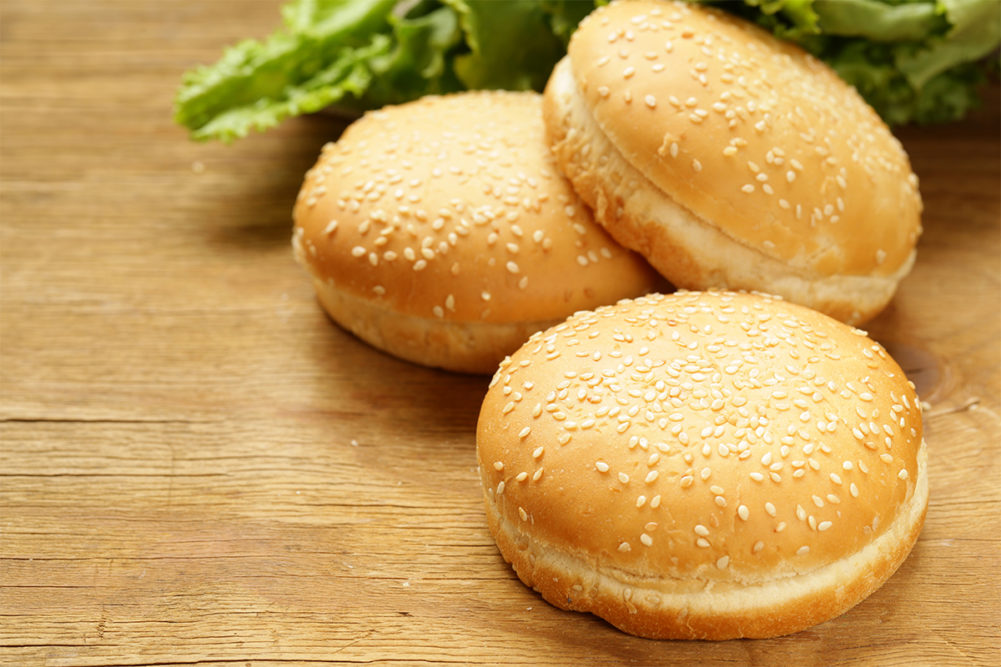CHICAGO — Wholesale bakeries face a major challenge and potential sanitation nightmare now that sesame has been named the ninth major allergen, requiring it to be declared on food labels beginning Jan. 1, 2023.
Specifically, the ramifications of how to control and clean pesky sesame seeds on high-speed production lines is quickly sinking in, even though the looming deadline remains months away.
“Sesame is the elephant in the room. It’s definitely going to be a problem, especially for bun bakers,” noted Nathan Mirdamadi, senior food safety specialist, Commercial Food Sanitation, an Intralox company, during the American Society of Baking’s (ASB) BakingTech, held March 1-3.
Mr. Mirdamadi pointed out that most high-volume bakeries rely on hundreds of feet of belting that can be potentially difficult to clean after sesame seeds are applied to bread, buns, rolls and other baked goods.
On these production lines, sesame seeds are typically used as a topping on buns and rolls after proofing, creating a challenge with precisely placing seeds on the products and a potential allergen risk if the seeds blow off during baking in the oven or during cooling, slicing and packaging.
“This has been our approach so far,” Mr. Mirdamadi said. “Going piece of equipment by piece of equipment, determining what is required to get this piece of equipment allergen-free, and almost developing a line of attack for that particular piece of equipment. As you go through the line, once you determine how much and what is required to get the level of cleaning that you need, then you can look at how you can optimize it.”
Pan cleaners, for example, often rely on brushes to remove debris after baking and before the pan recycles back to the makeup area.
“You may determine to get all of the seeds out of a brush, it’s going to require X amount of time. That’s your starting point,” advised Mr. Mirdamadi. “You know that it’s feasible. Once you have that, you can now say, ‘Now, how can we optimize this? Should we change the design of these brushes so we can mount them and take them out very easily? Should we have dedicated brushes?’ ”
He added that the issue of sesame as an allergen shouldn’t have come as a surprise for the baking industry.
“When it comes to hygienic design, if you were building a bakery within the past five to eight years, and you didn’t at least consider the likelihood that sesame would become an allergen when building a plant in the US, you probably missed out on a big opportunity to make improvements in your design because we all knew it was an allergen in Canada,” Mr. Mirdamadi said.
Other ingredients that are currently considered allergens in other countries could eventually be declared as allergens in the United States.
“Regulations, very rarely, do they get any easier. They always get more strict,” he said. “So, if you’re building a plant today, we already know that in the UK celery is an allergen. In Canada, mustard is an allergen.”
The Food Allergy Safety, Treatment, Education and Research Act that was signed into law in April 2021 made sesame a major allergen, along with milk, eggs, fish, shellfish, tree nuts, peanuts, wheat and soybeans.
Mr. Mirdamadi spoke at BakingTech 2022 on “Successful Expansion with Hygienic Design and Cross Functional Teams.”
The challenge of sesame seeds as an allergen was also brought up at other sessions, including an industry panel on automation during ASB’s annual event.






